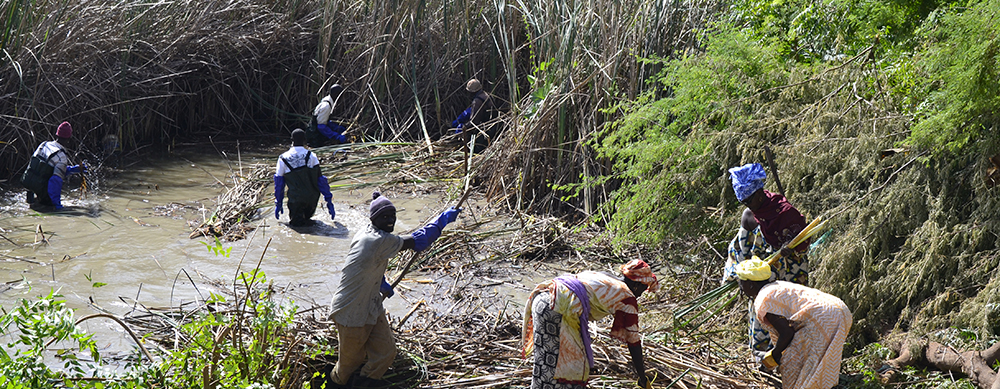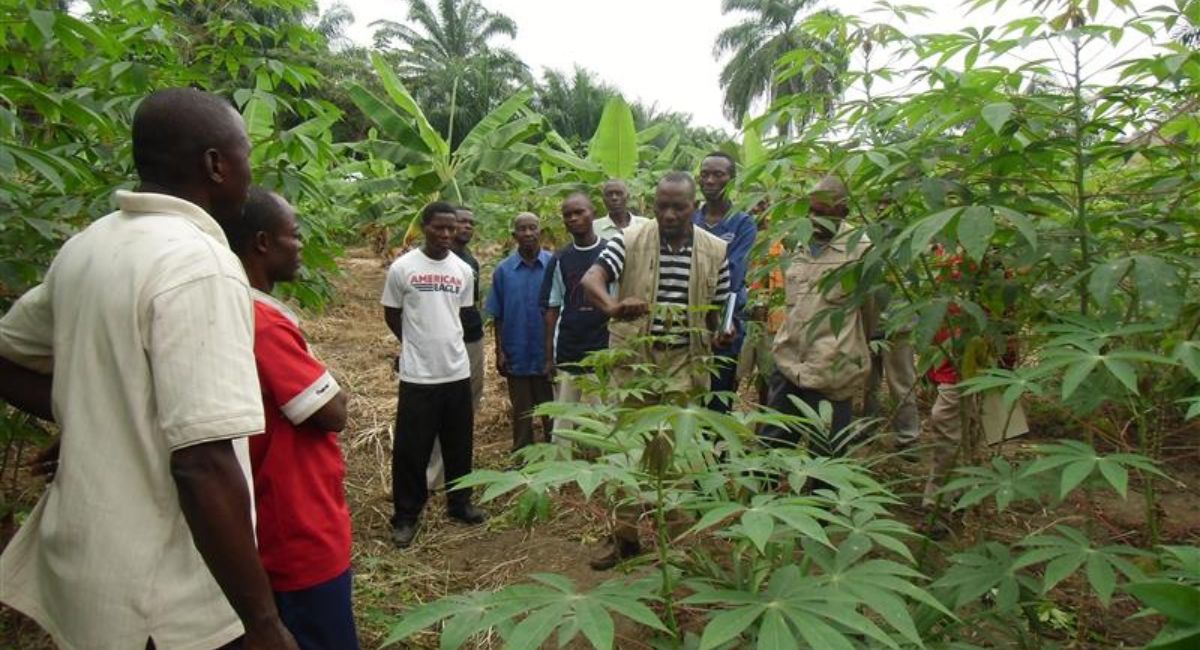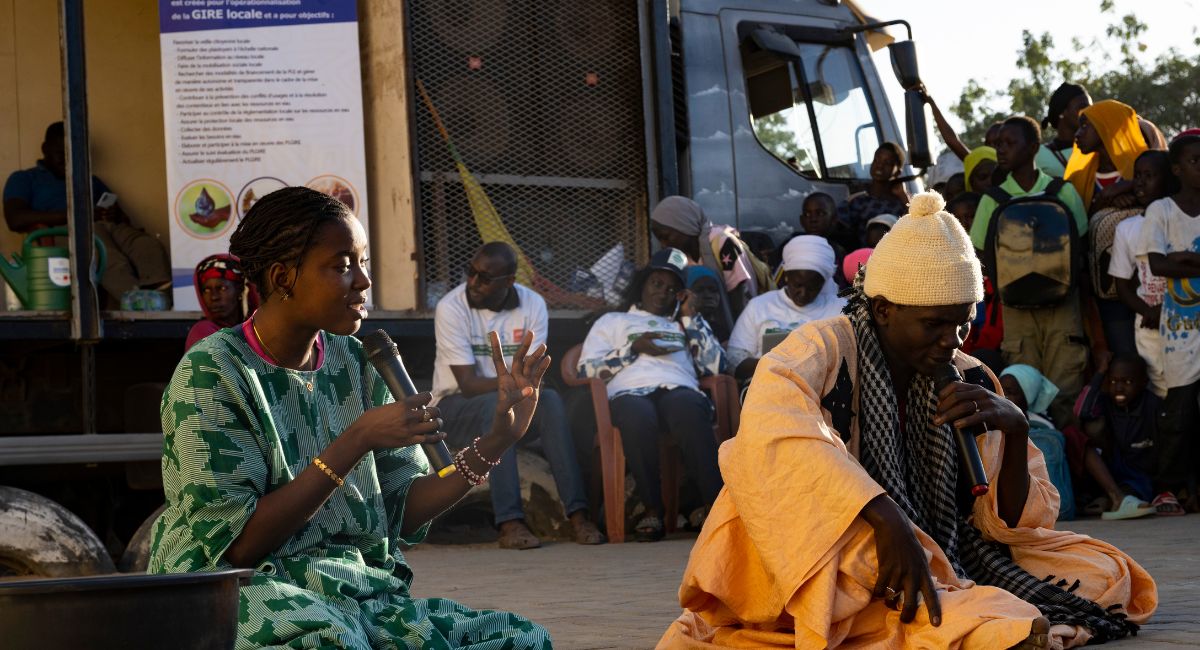Typha is an invasive plant that has been colonising the banks of the Senegal River for the last 30 years. To combat this scourge, GRET and its and son partner – the Rosso Institute of Technology – developed technology enabling this plant to be converted into a renewable biofuel. An experiment that has been illustrated in images, with a capitalisation video produced in Mauritania.
Since the construction of the Diama and Manantali dams over the Senegal River in the 1980s, typha australis, a fast-growing invasive reed, has been colonising the banks of the river, its watersheds and waterways. This plant suffocates biodiversity and has significant impacts on the population, depriving it of access to waterways and the river’s resources. The agriculture, livestock breeding and fisheries sector are very severely affected. We also observe an increase in illnesses caused by stagnant water – schistosomiasis, malaria, etc. To date, no local, national or international programme has succeeded in stemming proliferation of the plant. Objectives have ranged from eradication to combat, through to control. Today the focus is on turning a scourge into an ally by converting it. Primarily as energy…
A collective learning curve
The use of charcoal in this region, mainly for cooking, has devastating effects on the environment in Senegal and Mauritania, with 1.5 and 6 million cubic metres of wood used respectively every year, leading to massive deforestation.
Faced with this situation, GRET and its partners – Rosso Institute of Technology (Iset) and Dawling National Park (PND) have been working since 2011 on converting typha into a clean, sustainable biofuel. Research, initially funded by the European Union and the Agency for the promotion of universal access to services (Apaus), led to a process for the manufacture of an effective resource. The latter is solid, with considerable calorific value and generates only a small amount of smoke when used. It’s price is also competitive compared to that of charcoal. To manufacture it, typha is cut, dried and carbonised, and then compressed into briquettes that can be used for cooking.
Several small artisan units were set up to produce this biofuel in Mauritania and Senegal respectively, through South-South skills transfers. These units are mainly run by women’s cooperatives in villages close to water points invaded by typha. They make it possible to cut and control the typha at certain sites, to locally supply an alternative biofuel to wood fuel, and for these women producers to earn an additional income. Although the quality of the biofuel has been confirmed and a comprehensive ecosystem of businesses was set up (production of machines and tools for the production of biofuel, quality certification body, distribution partners), activities focusing on development of sales were insufficient and the units are still finding it difficult to distribute all of their production. It is necessary therefore to continue working with these cooperatives, with support from new financial and technical partners, in particular via sponsorship of skills.
| The advantages of typha biofuel – Very little smoke, odour or ashes – Quick to light – Long burning – High calorific value – Low level of humidity – Solid |
Huge potential
The efforts made to convert typha into biomass energy have not yet made it possible to stem the progression of the invasive plant. In Mauritania, using technology developed by Iset, GRET and its partners are now envisaging setting up a semi-industrial plant to produce this typha biofuel, mixed with rice husks. Such a plant would have greater production capacities with the creation of conditions to facilitate its commercial success, in order to respond to increasing needs for an alternative fuel to charcoal and the requirements of urban populations: cost-reduction, improvement of the product’s technical characteristics, etc. Through these pilot projects, GRET wants to demonstrate the feasibility of this value chain with a view to rolling it out on a larger scale and replication of the model in other regions. It could also be used for other invasive plants. The project, which won the Convergences Award in 2015 and was awarded the ADEME “Innovative solutions for access to off-grid energy (in french)” project in 2018, aims to exploit typha until it is exhausted, wherever it is imperative to recover agricultural land that has been invaded, to restore access to the river and to fishing, and to relieve pressure on canals.
Typha’s potential for energy is phenomenal, but this is just one stage. Other possibilities for larger-scale exploitation are already being explored. It turns out that the small shoots at the heart of the plant are delicious and are actually highly popular in Asian cuisine. Converting typha into building materials with insulation properties could strengthen the energy efficiency of buildings and have a real impact on the construction sector. These possible uses of typha are opportunities that would make it possible to better control typha by cutting it regularly for supplies, thereby contributing to the fight against deforestation and climate change, and to energy transition in sectors emitting the highest levels of greenhouse gases by developing the use of renewable fuels or bio-sourced materials.
Video testimonials to share best practices
To take stock of the progress made so far, capitalisation videos were produced in Mauritania. These video clips, made by Christine Bouteiller with the help of the teams on-site and socio-anthropologist Audrey Dupont-Camara, retrace the “typha odyssey” and provide insights into the different facets of the project. They illustrate how the situation has evolved, from the arrival of the invasive plant to the consequences it generates, through to the semi-industrialisation of the process for producing the biofuel, its prospects and its limits.
These videos, which can be viewed on www.typha.org, facilitate sharing the experience between the “pioneers” – the Mauritanian businesses – and their counterparts in Senegal, where the project was subsequently replicated. In these testimonies, the people involved talk in particular about what worked and the challenges that have yet to be met – for example, aspects relating to “marketing”.
These video interviews complement the existing discourse on the conversion of Typha biofuel. They also enable the provision to a broader audience of concise information on certain elements that had previously only been accessible in a small number of reports. The advice given in the various tutorials could be very useful, for the people mainly concerned and for anyone interested in development and project management!





